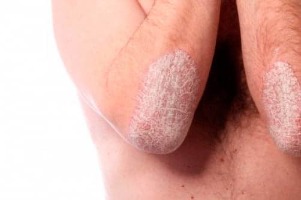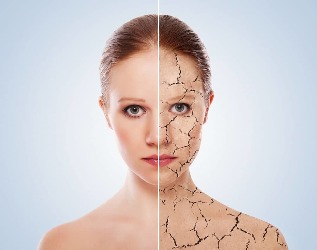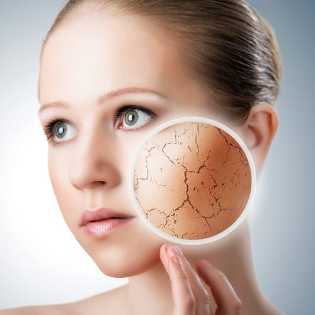
Although psoriasis is a common and well-known disease, it is still not fully understood. Patients usually don't know that psoriasis is not a bacterial infection or fungus, but a non-standard response of the immune system for unknown reasons. Information about the causes and symptoms of psoriasis will be very useful to patients because they will help overcome the disease.
What disease is this?
Lichen scale is another name for psoriasis, and this name perfectly describes the disease. Psoriasis is manifested by the formation of inflamed plaques of different sizes on the skin, which are densely covered with thick skin scales.
Of course, almost everyone has heard of psoriasis. This is not surprising, because scaly lichens are very common. The disease is diagnosed in 4-10% of the world's population. In addition, statisticians who collect information on the prevalence of psoriasis believe that the number of patients is steadily increasing.
Scale lichens have been well known since ancient times, and even ancient Greek healers tried to treat this disease. The modern history of psoriasis research is about 150 years old. However, during this considerable period of time, researchers did not know enough about the causes and treatments of psoriasis.
Widespread prevalence, uncertain etiology (causes of occurrence), poor treatment effects-all these describe psoriasis as one of the most difficult problems in dermatology.
Nowadays, dermatologists regard psoriasis as a complex systemic disease, which is related to immune system diseases, with abnormal metabolic processes and nutritional disorders. These malfunctions can cause specific skin changes.
Therefore, when answering the question of what psoriasis is, modern dermatologists will answer that these are abnormal skin nutrition and metabolic processes caused by the dysfunction of the body system. Today, two theories about the cause of psoriasis are considered the most likely: genetics and virology.
- There are many proponents of genetics, because psoriasis usually plays a role in hereditary or familial skin diseases. A careful study of the family history of 60% to 80% of patients confirmed the presence of one or more forms of psoriasis in the relatives of the patients. However, in some patients, the fact that the genetic origin of psoriasis cannot be confirmed. This situation is the reason for assigning these cases to a special group. The main reason is not genetic but phenotypic failure.
- The virus doctrine has its supporters, according to which it is said that psoriasis develops due to infection. The confirmation of the information about the origin of the psoriasis virus is to detect antibodies in the patient’s blood and "primitive bodies" in the epidermal cells. According to this theory, psoriasis not only develops when infected with a virus, but also develops under certain conditions.
There are other theories explaining psoriasis. For example, endocrine, neurogenic, metabolic, etc. Naturally, all these theories are not without basis, and their research allows you to obtain more important information about psoriasis disease. However, it has been determined today that the state of the endocrine and nervous systems and the role of the digestive tract will not cause psoriasis, but they have an important impact on the course of this disease.
For example, the fact that the pathology that affects the liver causes the organ's blood purification quality to be greatly reduced. This in turn stimulates the appearance of various skin appearances including psoriasis.

Pathologies that affect the liver (hepatitis, primary cirrhosis, etc. ) cause the tissue to regenerate in this organ, that is, the liver is gradually replaced by connective tissue. As a result, the liver no longer adapts to its cleansing function. From the outside, this manifests as yellowing of mucous membranes and skin, and skin diseases including psoriasis may develop.
There is also an inverse relationship. Psoriasis is often accompanied by steatosis and affects the liver. Therefore, in the treatment of this skin disease, it is important to observe eating habits so as not to unnecessarily increase the burden on the liver. It is recommended that patients limit fatty foods and completely eliminate alcohol.
Therefore, despite a lot of research, there is still no way to answer exactly what psoriasis is. However, this work is still going on, so it is possible to solve the mystery of this mysterious disease, we will learn a lot about psoriasis skin disease knowledge.
International Classification
Psoriasis disease manifests itself in various forms. To make it easier for experts to browse, the recognized classification of psoriasis is used.
Added psoriasis to the International Classification of Diseases (ICD). To date, the International Disease Register has used 10 revisions, so the abbreviation ICD10 is used. Ten revised versions of the International Disease Classifier began work in 1983 and were completed in 1987.
In essence, ICD 10 is a standard assessment tool for medical and health management. The manual in revision 10 is used to monitor the prevalence of various diseases and other health problems in the population.
Using ICD version 10, it is possible to compare morbidity and mortality data in different countries, so that it is possible to obtain statistical data and systematize diagnostic information. With the consent of WHO members, ICD 10 is used to assign codes to various diseases. In the tenth edition of the classifier, an alphanumeric code is used, with which information can be easily stored in electronic form.
All types of psoriasis are included in ICD 10, and each type is assigned a specific code. In dermatology, psoriasis has the following forms and types:
- Ordinary psoriasis(Synonyms: vulgar, simple, plaque). The disease has been assigned a code in accordance with ICD 10-L-40. 0. This is the most common form and is observed in 80-90% of patients. The main symptom is the formation of plaques, which are higher than the unaltered skin surface, covered with white-gray skin scales. This form is characterized by slight peeling of fish scales. After the skin is removed, the reddish skin will open up, easily hurt and start bleeding. As the inflammatory process progresses, the size of the plaque will increase significantly.
- Psoriasis retrograde. It is a disease that affects skin wrinkles (finger surface). For this form of disease, the code L83-4 is adopted in ICD 10. The appearance of skin diseases is the formation of smooth or very few flaky folds on the skin. When the skin is injured by friction, the condition can be observed to worsen. The disease is usually caused by related streptococcal infections or fungi.
- Psoriasis. This psoriasis is characterized by the formation of a large number of small red or purple spots on the skin, similar in shape to water droplets. According to the 10th edition of the International Classifier, the disease received an L4 code. Most commonly, psoriasis can affect the skin of the legs, but the rash may occur on other parts of the body. At the same time, the cause of psoriasis is that streptococcal infection (pharyngitis, tonsillitis, etc. ) develops into complications.
- Pustular or exudative psoriasisis a serious skin disease. According to ICD 10, its codes are L1-3 and L 40. 82. It is characterized by the formation of blisters or pustules. The skin of the lesion is edema, red, inflamed, and easy to fall off. If fungi or bacteria penetrate the pustules, the contents of the pustules will become purulent. Pustular psoriasis usually affects the distal end, but in the most severe cases, the rash spreads throughout the body, and systemic lesions may appear.
- Psoriasis or joint disease psoriasis. According to version 10 of ICD Pathology, code L5 is assigned. It manifests as inflammation of the joints. Arthropathic psoriasis affects all types of joints, but in most cases, the joints of the toes and phalanges become inflamed. The knees, hips or shoulder joints may be affected. The lesion may be so severe that it causes disability in the patient. Therefore, you should not consider psoriasis as a pure skin disease. Severe types of psoriasis can cause systemic damage, disability and even death.
- erythrodermic psoriasis. According to ICD 10, this rare but severe type of psoriasis has the code L85. Erythroderma psoriasis usually manifests itself in a common way, and the entire or almost entire surface of the skin may enter the affected area. The disease is accompanied by severe itching, swelling, and soreness.
- Psoriatic psoriasis or nail psoriasis. According to the 10th edition of the ICD, the code name of the disease is L86. Changes in the appearance of nails on toes and hands may indicate pathology. The nails will change color, thicken and start to deteriorate. The nails may fall off completely.

In psoriasis, the classification of diseases should not only consider the type of disease, but also the severity of symptoms:
- Localized psoriasis is a disease in which less than 20% of the skin is affected;
- Extensive psoriasis affects more than 20% of the body surface;
- If almost the entire surface of the skin is affected, then we are talking about common psoriasis.
If all types of diseases are considered, common psoriasis is more common than other forms of psoriasis.
Flow level
The limitation or extensiveness of psoriasis goes through three stages: progressive, stable and regressive.
The following are the characteristics of the developmental stages of psoriasis:
- A new rash appears;
- The growth of existing plaques;
- A new component of the rash (scratches, abrasions) appearing on the wound site;
- Massively scale existing patches.
The following symptoms are characteristic of stable psoriasis:
- No new elements appear;
- Moderate stripping of elements;
- There is no sign of element growth.

The appearance of wrinkles in the stratum corneum surrounding the element is a sign of the transition from the stationary phase to the regression phase.
The characteristics of the regression phase are the following symptoms:
- The peel strength is reduced;
- The resolution of the element.
After the psoriatic plaque subsides, the spots with insufficient pigment or hyperpigmentation remain in place.
Lichen scaly is characterized by a long course and periodic attacks. Distinguish the following types of psoriasis:
- Winter (intensified in autumn and winter);
- Summer (intensified during warm periods);
- Off-season psoriasis is the most serious type, because there is no clear link between recurrence and the season of the year, so there may actually be no remission period.
Diagnostic function
If psoriasis has typical clinical manifestations, the diagnosis will not be so difficult. However, this disease is often disguised as other diseases.
For example, nail psoriasis is often mistaken for nail fungus, because the early appearance of these diseases is very similar. However, nail fungus and psoriasis are fundamentally different, so treatment methods should also be different.
laymen can mistake psoriasis and fungi for fungi. Due to skin fungal diseases (dermatophytes), similar symptoms-the formation of scaly patches. Therefore, if you find suspicious symptoms on your body or nails, you do not need to self-diagnose, and you do not need to continue reading information on using pharmacies or folk remedies to treat fungi.
If the diagnosis is wrong, and the actual cause of the symptoms is not fungus, but psoriasis, the treatment will not help, but will make the symptoms worse.
When contacting a dermatologist, a fungal analysis will be performed, scraping off the nail or skin. The resulting material is then placed in a nutrient medium. If fungus is present in the material, large colonies will grow in the test sample after a few days. Through the appearance of the material, it will be possible to understand which fungus is causing the infection.
Sometimes, psoriasis is complicated by a secondary infection, which may be bacterial infection or fungus. Therefore, when the clinical image changes (appearance of purulent secretions, discoloration of plaques, etc. ) , the patient will have to be checked regularly for fungi and other infectious agents.
, the patient will have to be checked regularly for fungi and other infectious agents.
During the diagnosis process, certain roles are assigned to a group of phenomena called the Psoriasis Triad. When the components of the rash are scratched, the phenomena appear sequentially.
The psoriasis triad looks like this:
- When scraping the rash element, remove the scales in the form of "cutting";
- When the film is damaged, a precise bleeding will be opened.
The dermatologist diagnosed psoriasis, but if necessary, the doctor can refer the patient to other specialists-rheumatologist, gastroenterologist, surgeon, etc.
Interesting facts about psoriasis
People have known psoriasis for a long time. Even the name of this disease is derived from ancient Greek. During the prosperity of the ancient Hera people, the term "psora" meant all skin diseases manifested by peeling and itching.
The first person to write a detailed paper on psoriasis was the Roman Cornelius Celsus. In the fifth volume of his book "De medicina" (De medicina), there are extensive chapters on this disease.
They knew about psoriasis, but did not make a clear assessment of this disease, because it was called an "imperialist" disease and then an "abnormal" disease.
Of course, ancient healers knew very little about psoriasis. Until the 19th century, this disease was often mixed with other skin diseases. In 1799, psoriasis was first identified as an independent form of nasal disease. This was done by Robert Villan, a British dermatologist, who singled out psoriasis from a large number of skin diseases, which manifested as itching and flaking.
Not only ordinary people, but also well-known political figures know psoriasis directly. For example, Winston Churchill, who suffered from this disease, promised to erect a pure gold monument for someone who can learn everything about psoriasis and provide effective treatments.
Modern understanding of disease
It must be said that modern science knows very little about this mysterious disease. There are many theories about the origin, course and treatment of psoriasis.
Here are some undisputed facts about psoriasis:
- Although the cause of the disease is not known, it is still possible to find the nature of psoriasis. This disease is autoimmune, that is, it is caused by a dysfunction of the immune system.
- Another fact about psoriasis: The disease can be inherited. However, this is not always the case. Even if both parents are sick, the child's risk of the disease is as high as 65%. At the same time, some patients suffer from psoriasis, although none of his relatives are sick.
- An important discovery can give you more information about psoriasis, namely the relationship between the disease and climatic factors. Exacerbations and relapses are usually based on seasonal changes.
- In practice, patients may have noticed the link between worsening illness and stress. All patients should be sure that the disease recurs or worsens in the context of nervousness and experience. A new fact about psoriasis is that the disease can appear at any age, although it was previously thought that lichen scales would occur after the age of 30.
- It is important for everyone to know that psoriasis is not a contagious disease. Even in close contact with the patient, there is no risk of infection.
- Almost everyone has heard of the incurable nature of psoriasis. This is true, because no cure has been found that can definitely cure this disease. But patients should be aware that psoriasis can be controlled. Appropriate and timely treatment can provide long-term relief.
Modern treatment methods
When it comes to the common disease of psoriasis, we have to say the treatment of this common disease. It must be said that it is impossible to cure psoriasis with only tablets or ointments.
To forget the manifestations of psoriasis for a long time, patients need to work closely with their doctors and do their best. It is necessary to organize the food correctly. Some experts believe that only with proper diet and regular body cleaning can you forget psoriasis forever.
The doctor will make a preliminary plan for treatment. Usually, both topical (ointment, cream) and systemic (tablets, injections) are used. In addition, physiotherapy methods will be used, and treatment at the resort is recommended. It is recommended to use healing mud, mineral water and hot water to treat psoriasis.
The resort can also provide non-traditional treatments. For example, with the help of fish living in hot springs. These little therapists can effectively remove dead skin and disinfect the skin to promote the fastest healing.
There may be other treatments for scaly lichens in the resort. For example, hydro-ech therapy, rehabilitation bath and application, sun therapy, etc.
You need to be prepared for the fact that your treatment plan will change regularly. Because not all methods are suitable for specific patients. If the selected treatment is not effective, it needs to be replaced.
Popular treatments for psoriasis are also widely promoted. Indeed, some of them can help achieve mitigation. However, when choosing a method, you need to remember common sense so as not to harm your health. If you have questions about recipes or suggestions, it is best not to use them. Please consult a doctor before using any treatment.
It should be understood that only by actively adjusting the patient and his surrounding environment can it be possible to forget psoriasis forever. Only a belief in success and an optimistic attitude can help overcome this mysterious and hidden disease.























